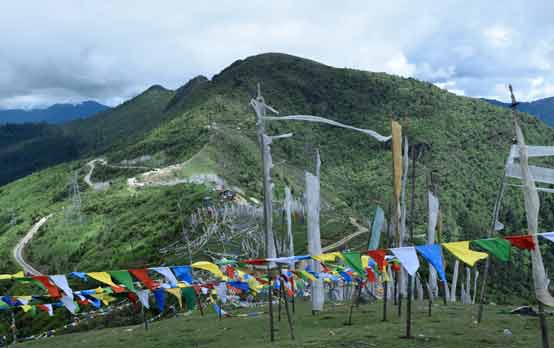Haa valley - Unspoiled & unsullied.
Haa is one of the smallest districts in the country. This tiny region is one of the most beautiful and isolated areas in the kingdom. It is adorned with pristine alpine forests and tranquil mountain peaks.
This valley remains one of the least visited areas in the country and retains the air of an unspoiled, primeval forest. The wooded hills of Haa provide an ideal location for hiking and mountain biking. Biking around the valley to get to the local temples is an enjoyable way to spend the day.
Haa is home to a number of nomadic herders. It hosts an annual Haa summer festival that showcases their unique lifestyle and culture. The festival is an ideal occasion to immerse in the traditions and unchanged lifestyles of nomadic Bhutanese herders. It is certainly one of the best places to visit in Bhutan.
Tourists attractions in Haa valley.
1. Haa dzong:
Ha dzong is one of the newest dzongs in Bhutan. It was built in 1915 to replace a smaller structure. It is a large square structure with battered inward-sloping walls. The annual Haa summer festival is held here in the month of July.
2. Chhundu lhakhang:
This temple is one of the many temples dedicated to Chhundu, the protective deity of Haa. It is a 5 minutes walk from Gaynekha.
3. Wangcha, Haa- Chele la- Paro – Bondey:
It is roughly about 26 kms from Haa to Chele La. There’s no habitation on the route as the road switches back through a forest of blue pine, fir and oak. At about 3400 m the road traverses through alpine country towards the pass. Cheli La is 3,810 m. It is then a 35 km drive down to the junction with the Paro valley road in Bondey.
4. Lhakhang Karpo:
It is one of the 108 temples built in one day by the Tibetan King Srongtsen Gampo. He built Lhakhang Karpo and Lhakhang Nagpo in the Haa valley. According to legend, a black and a white pigeon were released to select sites to build the temples.
These two temples stand as the guardian sentinels keeping watch at the south entrance of the valley. The white pigeon landed on the foothills of the three towering mountains worshipped as Rigsum Gonpo and is where the lhakhang stands today.
The temple was named Karpo (white) as it was built on the site where the white pigeon landed.
5. Lhakhang Nagpo:
Located in Dumchoe village, the monastery was established in the 7th century by King Srongtsen Gampo in his mission to build 108 monasteries in one day. It is situated towards the north of Lhakhang Karpo. Legend has it that the black pigeon landed a little north of the white pigeon, indicating the preordained site of the present Lhakhang Nagpo. The temple was named Nagpo (black) as it was built on the site where the black pigeon landed. Built on a lake; an opening in the floor of the temple serves as the channel to the underground lake. Lhakhang Nagpo serves as the seat for the guardian deity Da Do Chen.
The principal relic of the monastery is the Choe-Lung-truel Sum.
6. Tagchu Goemba:
This is a new monastery built in the 20th century and is located in the Lungsekha village. It houses religious texts such as Kangyur and Tenjur. Kanjur is the translated words of the Buddha. Tenjur is the translated commentaries on the words of Gautama Buddha.

